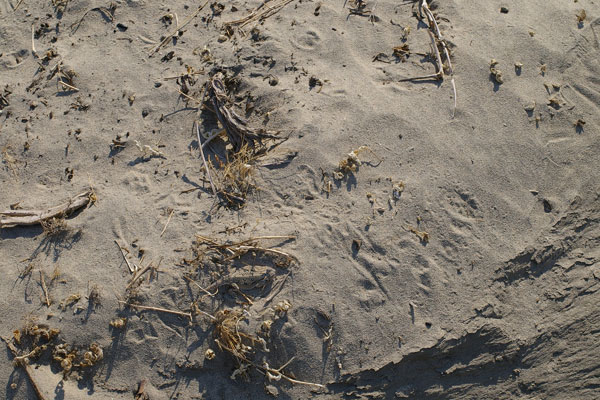
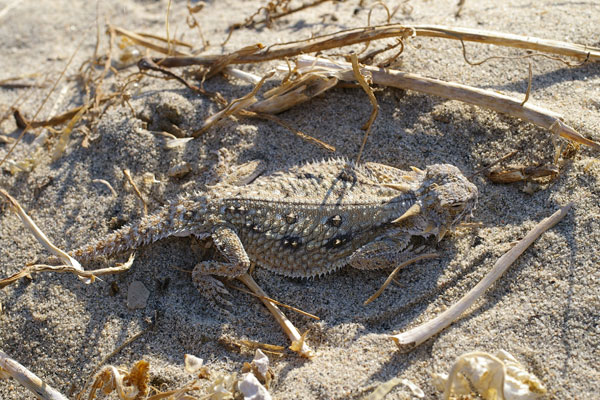
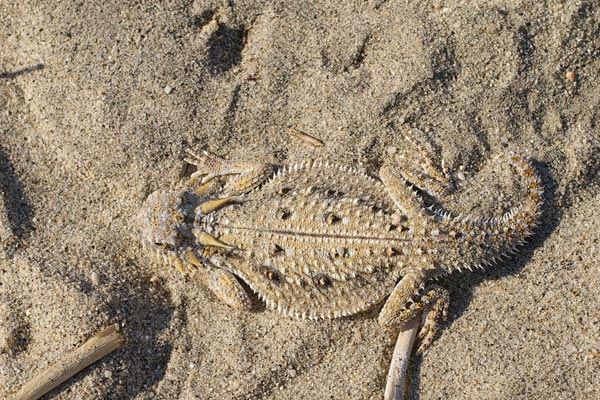
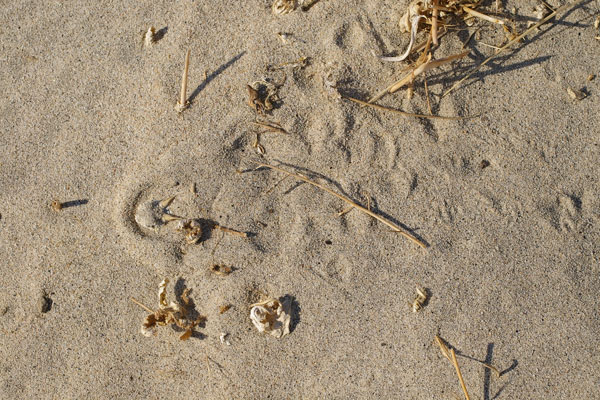
I had an opportunity to tag along with Dr. Cameron Barrows one morning as he walked a transect line through flat-tail habitat in the Coachella Valley Preserve. Dr. Barrows is among other things the manager for this preserve, and is an expert on tracking all the different inhabitants. On the morning I joined him, the sand was criss-crossed with a zillion tracks from rodent activity the night before, because it hadn't been windy enough to wash them away. Dr. Barrows warned me that our chances of finding flat-tails would be much better on the morning after a windy night, but I was only in the area for that one morning, so off we went. Also, at this hot time of year, the activity period for these lizards is only a couple of hours long, so if you can't find them by about 9 AM, you're pretty much out of luck.
Fortunately, it took the eagle eyes of Dr. Barrows only about twenty minutes to find what seemed to be fresh flat-tailed horned lizard tracks among all the rodent tracks, fringe-toed lizard tracks, beetle tracks, etc. Once he was confident that the tracks were fresh, we stopped moving and just scanned the ground around us, looking for a well-camouflaged lizard shape. The first photo above shows my approximate field of view when I spotted the lurking lizard. The second photo is the same lizard in the same place. It let my camera approach to a few inches away before it finally moved; the third photo is the same lizard again, after it had shuffled to a more open spot.
While I was taking my time photographing my first flat-tailed horned lizard, Dr. Barrows was continuing his transect walk to record every type of track he could count. Along the way, he recognized another fresh-looking set of horned lizard tracks. I caught up and we both scanned the nearby area until Dr. Barrows let out a laugh as he spotted the lizard seen in the fourth photo above. Dr. Barrows told me that after a flat-tail gets its morning fill of ants, it often will bury itself in a thin layer of sand with only the head showing. This allows it to be well-hidden from predators, while simultaneously staying nice and warm in order to digest its breakfast as quickly as possible.
I am indebted to Dr. Barrows for letting me tag along with him, and of course for his superior horned-lizard-locating skills. I am also indebted to my friend Fred Harer for putting me into contact with Dr. Barrows in the first place.
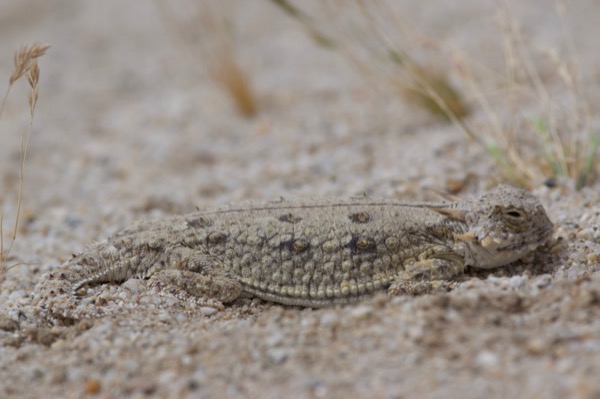
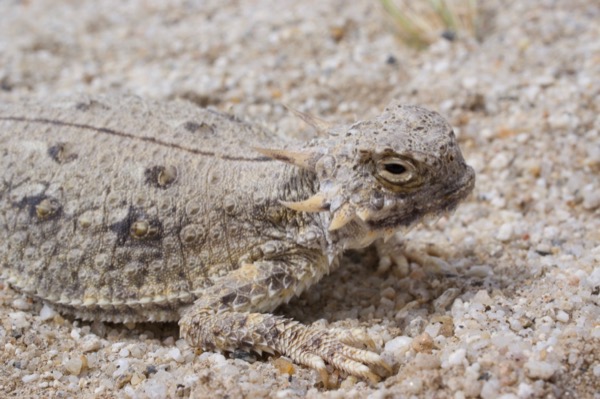
- Phrynosoma mcallii account on CaliforniaHerps.com
- Eric Pianka and Wendy Hodge's excellent article on horned lizards, from the University of Texas.
- Behler, J. L., King, F. W. 1979. The Audubon Society Field Guide to North American Reptiles & Amphibians
- Crother, B. I. (ed.) 2017. Scientific and Standard English Names of Amphibians and Reptiles of North America North of Mexico, with Comments Regarding Confidence in Our Understanding, Eighth Edition
- Sanborn, S. R. 1994. The Lizard-Watching Guide
- Sherbrooke, W. C. 1981. Horned Lizards: Unique Reptiles of Western North America
- Sherbrooke, W. C. 2003. Introduction to the Horned Lizards of North America
- Smith, H. M. 1995. Handbook of Lizards: Lizards of the United States and Canada
- Stebbins, R. C. 2003. Peterson Field Guide to Western Reptiles and Amphibians, Third Edition